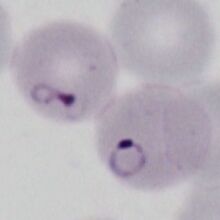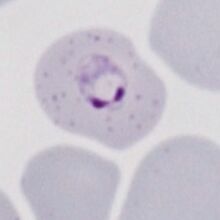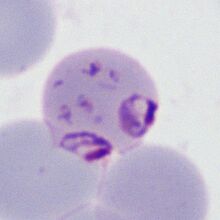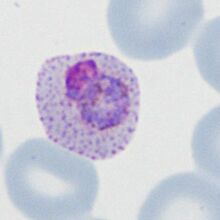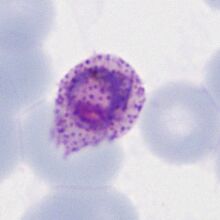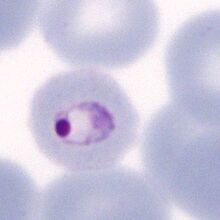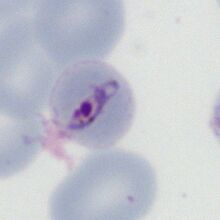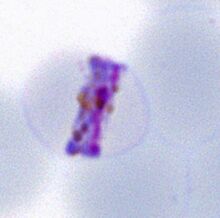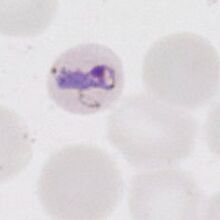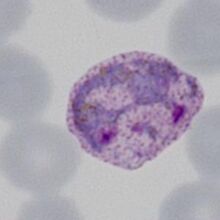Ring forms
From haematologyetc.co.uk
What is a ring form
- Ring cartoon.jpg
The earliest stage following red cell invasion has a typical ting form:
- a = chromatin dot
- b = digestive vacuole
- c = parasite cytoplasm
Description
At the earliest stage of red cell infection parasites have a ring form and distinction between species may not be easy (or even possible); however, as the parasite mature and develop differences become more apparent. In some species the ring form is maintained until late stages of maturation, in others there is loss of a typical ring appearance
- P.falciparum Typically small and delicate, these ring forms tend to persist from early trophozoite until late stages, during this time they may thicken
- P.ovale Typically large and robust rings, but maintain a ring shape until late stages of development (contrast with P.vivax
- P.malariae Small but more substantial that P.falciparum, these parasites become more solid or bad like, losing the ring form as they develop
- P.knowlesi Early forms resemble P.falciparum, but as they mature they often extend and become solid or band-like resembling P.malariae
- P.vivax Early stages appear as rings, but then become irregular and eventually the more typical amoeboid appearance appears
These changes are illustrated for early and late trophozoite below:
P.falciparum
Small and often delicate rings at early stages, these thicken at later stages, although they remain relatively small with a "ring appearance"
P.ovale
Robust rings that enlarge during parasite development, although the ring form can often still be distinguished
P.malariae
Small but more robust than P.falciparum, the parasites become more solid as they develop and may extend as a band across the cells
P.knowlesi
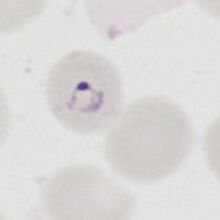
small or normal P.malariae (round)
P.vivax
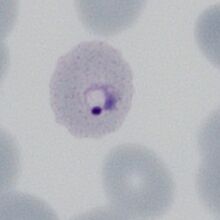
small or normal P.malariae (round)
Species significance
These changes can be very helpful in identifying malaria species
